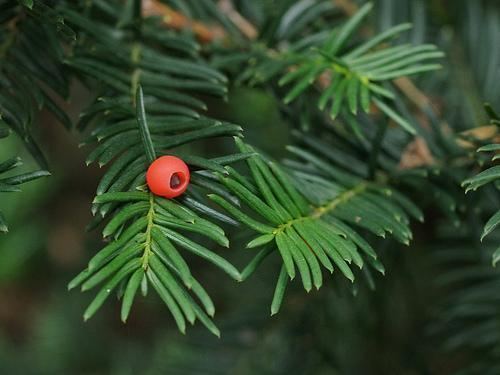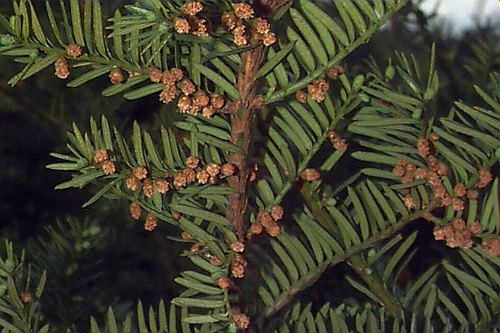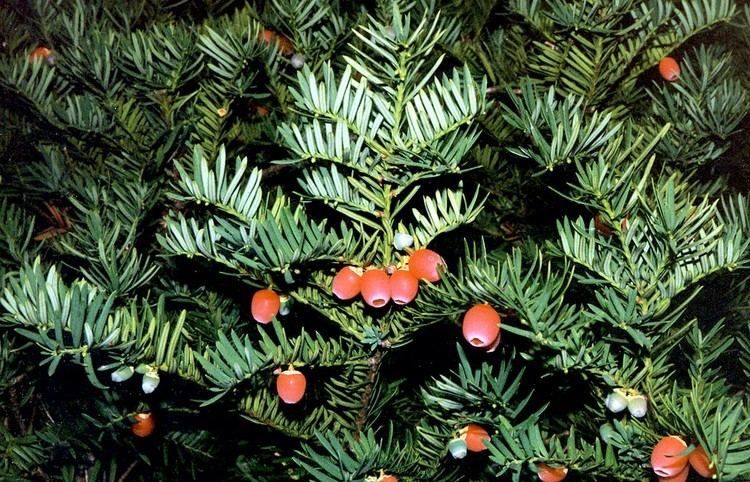Division Pinophyta Scientific name Taxus cuspidata Rank Species | ||
 | ||
Similar Taxus, Taxus chinensis, Taxaceae, English Yew, Taxus x media | ||
Taxus cuspidata japanese yew
Taxus cuspidata, the Japanese yew or spreading yew, is a member of the genus Taxus, native to Japan, Korea, northeast China and the extreme southeast of Russia.
Contents

It is an evergreen tree or large shrub growing to 10–18 m tall, with a trunk up to 60 cm diameter. The leaves are lanceolate, flat, dark green, 1–3 cm long and 2–3 mm broad, arranged spirally on the stem, but with the leaf bases twisted to align the leaves in two flattish rows either side of the stem except on erect leading shoots where the spiral arrangement is more obvious.

The seed cones are highly modified, each cone containing a single seed 4–8 mm long partly surrounded by a modified scale which develops into a soft, bright red berry-like structure called an aril, 8–12 mm long and wide and open at the end. The arils are mature 6–9 months after pollination. Individual trees from Sikhote-Alin are known to have been 1,000 years old.
Uses
It is widely grown in eastern Asia and eastern North America as an ornamental plant.
Toxicity
The entire yew bush is toxic enough to kill a horse, except for the fleshy berry surrounding the seed. For dogs, 2/5ths of an oz per 10 pounds of body weight is lethal. It is therefore advisable to keep domestic animals away from the plant. Undomesticated animals such as elk and moose have also reportedly been poisoned by yew.
